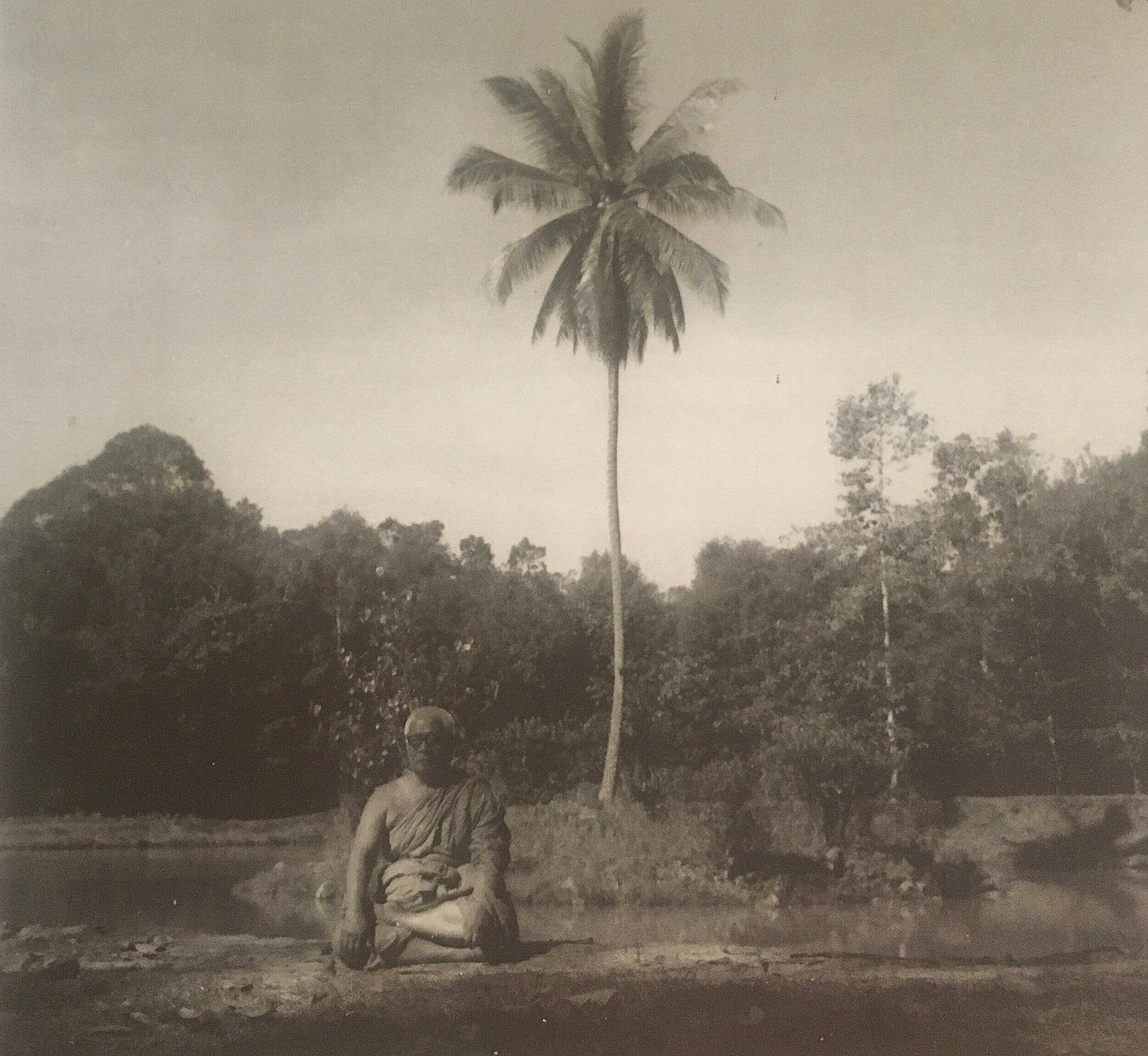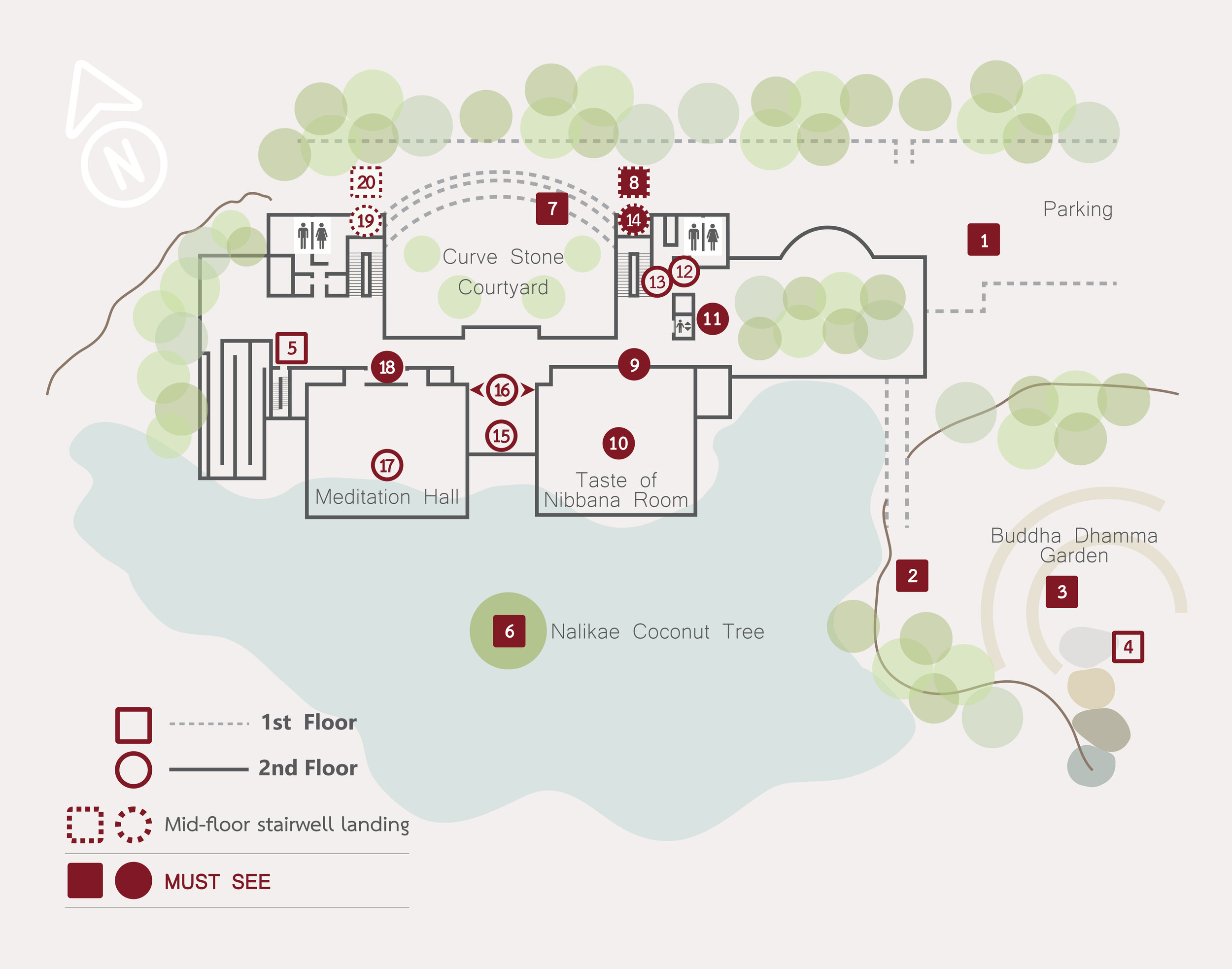Nalikae Lullaby
The ultimate liberation from suffering is within our reach
At Suan Mokkh, Buddhadasa Bhikkhu wanted to create something profound for Dhamma study. He had a large tractor spend a month excavating Nalikae Pond, in the middle of which was left an island planted with a lone coconut tree.
“We want to preserve the notion of the Nalikae island in the middle of a wax sea because it is sung as an old lullaby of this town, Chaiya. The people of this town believe that Buddhism came here more than a thousand years ago. The people of that time profoundly understood Dhamma and that nibbana (deliverance from suffering) is within the samsara (life process) or nibbana can be found within samsara.”
Nalikae Lullaby
Dear little child, listen to me,
There was once a Nalikae Tree,
Alone it stood amidst the hot wax sea, Untouched by rain,
Unthreatened by thunder,
It can be reached only by those
Who go beyond merit and matter
Buddhadasa Bhikkhu referred to this lullaby in various teachings, explaining the meanings within each line, and its ultimate message about the supreme goal of Buddhism — nibbana.
The Nalikae tree represents the goal of nibbana, or ultimate liberation from suffering.
Alone it stood describes the nature of nibbana, which is free of any dualism. We suffer because we are attached to positive and negative life experiences—happiness and suffering, the wholesome and unwholesome, gain and loss, ups and downs, likes and dislikes. The state of true liberation, or nibbana, is free from attachments to either.
Amidst the hot wax sea characterizes samsara, or the cycle of suffering and rebirth. Here, beings tend to bounce between positive and negative experiences like wax, which is hardened or softened according to changing temperatures. While in the Wax Sea, we are buffeted by the ever-changing waves of impermanence, and this is difficult to endure.
Untouched by rain, Unthreatened by thunder refers to the state of nibbana, which is unshakeable and absolutely free from all happiness and suffering.
It can be reached only by those who go beyond merit and matter. The final phrase is key, describing the Noble Ones and how they transcend the most refined obscurations to achieve ultimate liberation. Not only do they abstain from wrongdoings and develop virtue, they have no attachment to either.
“Dukkha caused by the sea of wax denies one’s access to the coconut tree, that is, nibbāna. As we know this, we should go to the Pond and meditate... This is called Dhamma analogy as a supplement for study. You can learn from reading books too, but learning from an object is profoundly useful.”
It is important to note that even though one does not commit any wrongdoing, if one cannot let go of seeking goodness and pleasures through all the five senses, then one is trapped in the cycle of rebirth and suffering. All attachment is a trap. The Noble Ones are beyond attachments since they view the world as constantly changing aggregates that are not worth clinging to, whether good or bad.
Buddhadasa urged us to find nibbana amidst samsara, or to seek freedom from suffering amidst the suffering itself. Similarly, wherever there is a fire, it is logical to extinguish it right there by pouring water on it. The root cause of suffering is craving. In order to cease suffering, one must extinguish the craving itself.




